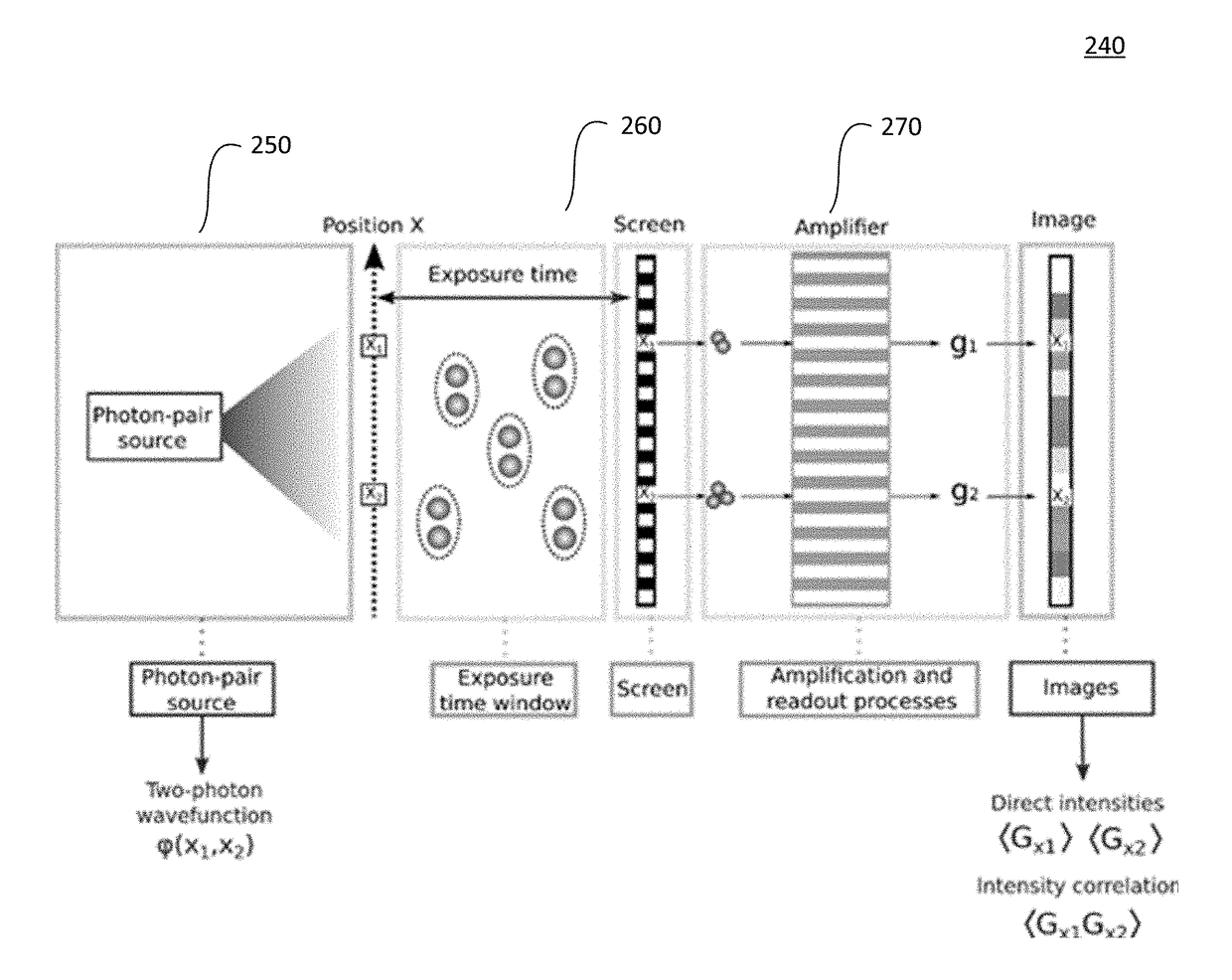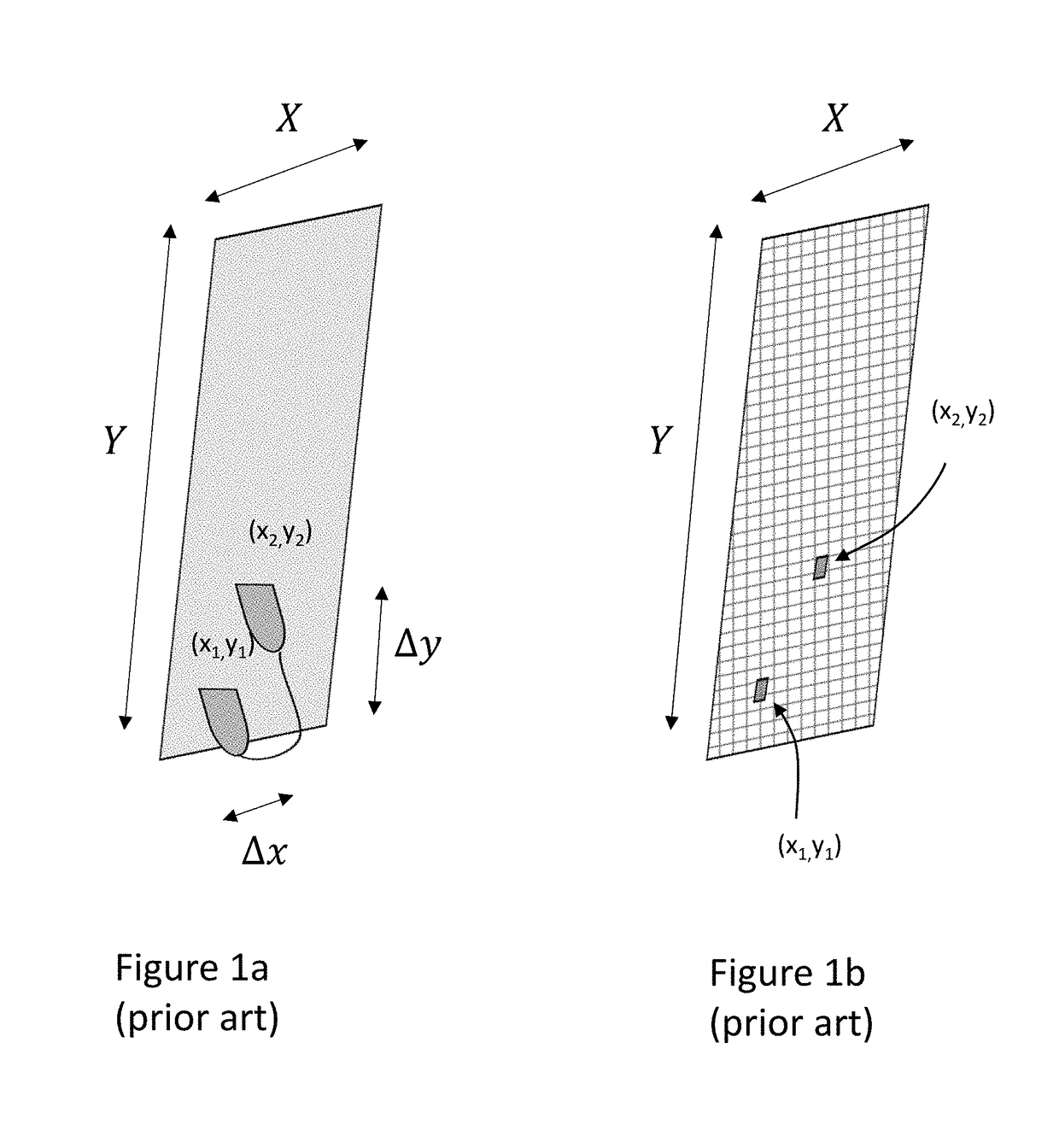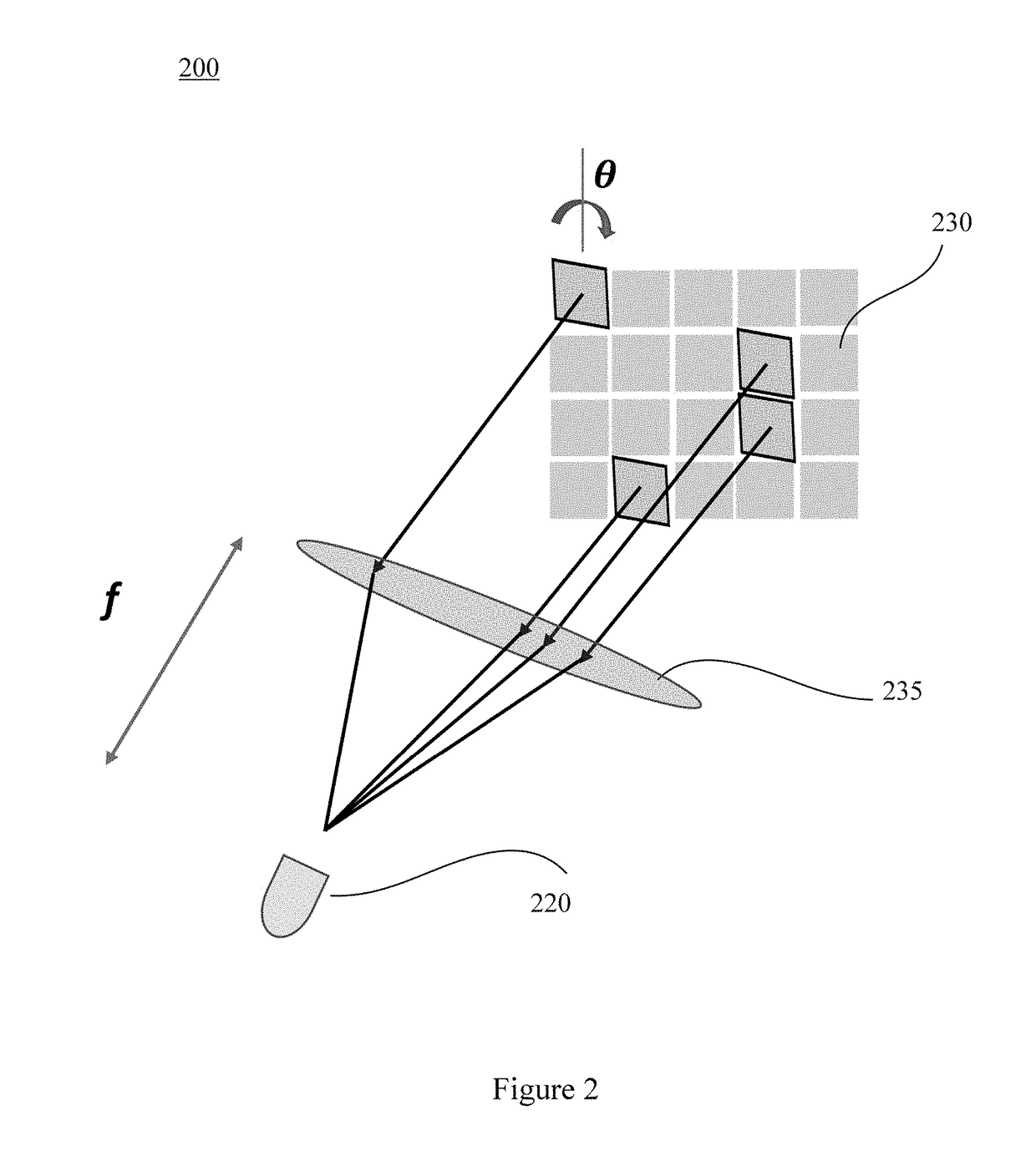Method and system for quantum information processing and computation
a quantum information processing and computation technology, applied in the field of detection and measurement in quantum optics, can solve the problems of inefficient and inconvenient scanning of these detectors with respect to each other, the need for an increased number of optical elements and point detectors that does not scale well, and the complexity of conventional approaches
- Summary
- Abstract
- Description
- Claims
- Application Information
AI Technical Summary
Benefits of technology
Problems solved by technology
Method used
Image
Examples
Embodiment Construction
[0022]Entanglement is an intriguing feature of quantum theory and is at the heart of quantum information processing. There has been increasing interest in the development of photonic sources generating entangled states of light with high dimensions. High-dimensional entanglement has been used to exploit different types of degrees of freedom of light, such as orbital angular momentum or frequency modes. Further, spatially entangled photon-pairs, such as those generated by Spontaneous Parametric Down Conversion (SPDC), exhibit correlations between many spatial modes. This large amount of entanglement offers new perspectives for applications in quantum information processing, quantum cryptography, and / or quantum imaging.
[0023]FIG. 1a illustrates a typical prior art configuration for measuring the joint probability distribution of at least one entangled photon pair. At least two single-point photodetectors are used to detect coincidence at points (x1, y1) and (x2,y2) in a two-dimensiona...
PUM
 Login to View More
Login to View More Abstract
Description
Claims
Application Information
 Login to View More
Login to View More - R&D
- Intellectual Property
- Life Sciences
- Materials
- Tech Scout
- Unparalleled Data Quality
- Higher Quality Content
- 60% Fewer Hallucinations
Browse by: Latest US Patents, China's latest patents, Technical Efficacy Thesaurus, Application Domain, Technology Topic, Popular Technical Reports.
© 2025 PatSnap. All rights reserved.Legal|Privacy policy|Modern Slavery Act Transparency Statement|Sitemap|About US| Contact US: help@patsnap.com



